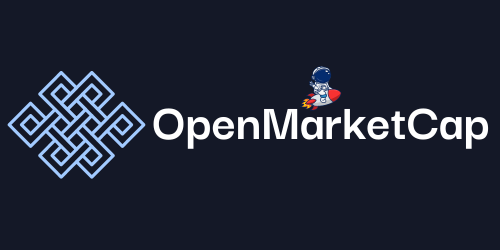Ever wondered how we can navigate the rollercoaster world of cryptocurrencies without losing our lunch? Enter stablecoins, the unsung heroes of the crypto universe. Unlike their volatile cousins, stablecoins offer a safe harbor, pegged to stable assets like the US dollar.
In 2023, the landscape of stablecoins is more exciting than ever. We’ve seen innovative projects and new players stepping into the ring. So, which ones should we keep an eye on? Let’s jump into the best stablecoins of 2023 and discover which ones are worth our attention.
Understanding Stablecoins
Understanding Stablecoins
Stablecoins represent a unique intersection where traditional finance meets the dynamic world of cryptocurrencies. In a market known for its wild swings, stablecoins offer a calm harbor for risk-averse investors.
What Are Stablecoins?
Stablecoins are cryptocurrencies pegged to the value of a fiat currency, commodity, or other cryptocurrencies. They’re designed to minimize price volatility, making them ideal for transactions and investments. Three main types are prevalent:
- Fiat-Collateralized Stablecoins: These stablecoins are backed by a reserve of fiat currency like the U.S. dollar. Examples include Tether (USDT) and USD Coin (USDC).
- Commodity-Backed Stablecoins: These stablecoins are pegged to the market value of commodities such as gold or silver. Tether Gold (XAUt) serves as a notable example.
- Crypto-Collateralized Stablecoins: These stablecoins are backed by other cryptocurrencies. Dai (DAI) is a popular example under this category.
Importance of Stablecoins in the Crypto Market
Stablecoins play a pivotal role in the cryptocurrency market. They offer the stability needed to conduct everyday transactions and help investments without the volatility that typically plagues other cryptocurrencies.
Facilitating Seamless Transactions
Stablecoins make it easier to transact across borders without the need for traditional banking systems. Imagine trying to send money overseas; stablecoins cut through the red tape and make the process almost instantaneous.
Risk Management
Stablecoins serve as a risk management tool. When the crypto market takes a nosedive, investors flock to stablecoins to preserve their capital.
Enabling DeFi and Staking
In decentralized finance (DeFi), stablecoins are crucial. They serve as collateral for loans and as a medium for staking, where users can earn interest.
Stablecoins are reshaping the future of finance. They marry the stability of traditional assets with the innovation of cryptocurrencies. Exploring the best stablecoins of 2023 reveals the potential for minimizing volatility and maximizing usage in the digital economy.
Criteria for Evaluating Stablecoins
Evaluating stablecoins involves several criteria to ensure they’re reliable, useful, and secure. Let’s jump into the key factors we consider vital.
Stability
Stability is crucial for any stablecoin. We look at historical performance and how well a coin maintains its peg to the underlying asset. For instance, Tether (USDT) has been relatively stable even though occasional de-pegging. Over the last month, it only fluctuated by 0.03%. USD Coin (USDC) had a slightly higher fluctuation of 0.05% but recovered quickly. DAI, backed by diverse crypto assets, has only lost its peg twice in its entire history.
Liquidity
Liquidity determines how easily a stablecoin can be bought or sold without affecting its price significantly. USDT has the highest market capitalization at $83 billion, making it extremely liquid. USDC follows with a market cap of $25 billion. Binance USD (BUSD) also plays a significant role in the market with a cap of $3.8 billion. These figures illustrate how crucial liquidity is for the smooth functioning of stablecoins.
Transparency
Transparency matters for trust and confidence in stablecoins. It involves knowing how and where the underlying assets are held, and understanding the auditing processes in place. For example, USDC is known for its monthly attestations by a reputable accounting firm. Transparency ensures that investors know their stablecoins are backed adequately.
Usability
Usability covers how easily a stablecoin can be employed in various applications like trading, DeFi, and everyday transactions. USDT is widely accepted across numerous exchanges and platforms. USDC is preferred for DeFi due to its compliance and transparency. DAI, being decentralized, is an excellent choice for those wary of centralized control. These use cases highlight the importance of usability in evaluating stablecoins.
By analyzing these criteria, we ensure the stablecoins we choose offer stability, liquidity, transparency, and usability.
Top Stablecoins of 2023
With stablecoins bridging traditional finance and the crypto world, let’s jump into the top stablecoins of 2023. These stablecoins have stood the test of time, proving their reliability and usefulness in a quickly evolving landscape.
Tether (USDT)
Tether (USDT) continues to dominate as the largest stablecoin by market capitalization. Pegged to the U.S. dollar at a 1:1 ratio, it’s backed by reserves, ensuring that for every USDT issued, there’s an equivalent real-world dollar. Many traders rely on USDT for its stability during volatile market conditions. It’s available on major exchanges like Kraken, Binance, and Coinbase, making it highly accessible. The routine audits have helped maintain trust, although debates occasionally arise about its reserve transparency.
USD Coin (USDC)
USD Coin (USDC) is another heavyweight in the stablecoin arena. Backed by the CENTRE Consortium, which includes big names like Coinbase and Circle, USDC undergoes regular audits to guarantee full collateralization. Its wide acceptance stems from its transparent, regulated nature, making it a favorite for both institutional and individual investors. We often see USDC used in decentralized finance (DeFi) applications, adding layers of usability in the crypto ecosystem.
Binance USD (BUSD)
Binance USD (BUSD), backed by the mammoth cryptocurrency exchange Binance, is a significant player in the stablecoin market. This stablecoin is pegged to the U.S. dollar and, like USDC, is fully collateralized and audited regularly. BUSD’s integration with Binance’s robust trading platform provides seamless usability, making crypto transactions smoother for its extensive user base. We appreciate the consistency BUSD brings to daily transactions within the Binance ecosystem.
DAI
DAI offers a unique approach among stablecoins, being decentralized and collateralized by other cryptocurrencies like Ethereum. It’s pegged to the U.S. dollar through an overcollateralization mechanism providing stability. This setup makes DAI particularly intriguing, as it’s immune to centralized control, appealing to those wary of central authority. Its decentralized nature ensures that it fits perfectly into DeFi protocols.
TrueUSD (TUSD)
TrueUSD (TUSD) emerges as another compelling stablecoin, fully backed by the U.S. dollar. Like USDT and USDC, TUSD undergoes regular audits to ensure transparency and trust. Its alignment with legal frameworks makes it a reliable choice for users looking for a compliant and transparent stablecoin. As we navigate through transactions, we find TUSD’s straightforward approach refreshing, promoting ease of use in various financial activities.
These stablecoins each have their strengths, offering us valuable choices tailored to our specific needs in the diverse cryptocurrency landscape.
Comparing the Best Stablecoins
When it comes to stablecoins, knowing their unique characteristics helps us make informed decisions. Let’s break down their attributes by focusing on stability and trust, market performance, and adoption and use cases.
Stability and Trust
Stability and trust are crucial for stablecoins. Tether (USDT) is one of the most recognized names here. Owned by iFinex, it’s backed by fiat currency and pegged to the U.S. Dollar, giving it a top spot in stability. USDT’s backing and consistent value make it a go-to for many of us in the crypto space.
USD Coin (USDC) is another strong contender. Backed by fiat and pegged to the U.S. Dollar, USDC is managed by Centre, a consortium between Circle and Coinbase. This collaboration brings a higher level of trust and transparency, which appeals to anyone wary of the volatility often seen in other cryptocurrencies.
Binance USD (BUSD), created by Binance and pegged to the U.S. Dollar, holds NYDFS approval, further bolstering investor confidence. This regulatory approval adds a level of trust that’s hard to ignore.
Decentralised USD (USDD) stands out as a decentralized option. While it’s pegged to the U.S. Dollar, its decentralization makes it unique. This structure provides stability and trust, particularly for those prioritizing a decentralized system over traditional fiat-backings.
Market Performance
Evaluating market performance offers insights into the popularity and stability of these stablecoins. USDT tops the chart with a market capitalization of $83 billion. Its presence on multiple blockchains enhances its market performance, making it a liquid asset.
USDC follows with a $26 billion market cap. Operating on multiple blockchains like USDT, its strong market performance stems from its backing and integration with significant platforms such as Circle and Coinbase.
BUSD, with a $3.8 billion market cap, shows robust performance. Binance’s influence and NYDFS approval contribute to BUSD’s credibility and usage in the market, securing its place among top-performing stablecoins.
USDD also exhibits a significant market presence. Even though not having an exact market cap listed, its decentralization and multi-blockchain operations indicate a strong performance, making it a viable option for various transactions and investments.
Adoption and Use Cases
Understanding adoption and use cases reveals how we might use these stablecoins. USDT’s widespread adoption is evident in its high market cap and liquidity, facilitating transactions on various platforms—ideal for trading and as a bridge asset between different cryptocurrencies.
USDC is similarly versatile. Its acceptance on major platforms and usage in decentralized finance (DeFi) make it an attractive option for both individual and institutional investors. Its transparent operations add to its adoption credibility.
BUSD serves as a reliable medium of exchange. It’s favored for trading within the Binance ecosystem, offering users a stable asset for transactions and investments. Its approval by NYDFS further ensures that it’s widely accepted and trusted.
USDD offers a unique decentralized use case. It’s ideal for those wanting to engage with DeFi projects without relying on traditional fiat-backed stablecoins. This decentralized nature could appeal to those prioritizing blockchain independence and security.
By comparing these stablecoins, we get a comprehensive view of their stability, market performance, and adoption. Making informed decisions becomes easier with such clear, distinct information.
Future Outlook for Stablecoins
Stablecoins are playing a transformative role in the modern financial ecosystem. As we look ahead, several factors will shape their evolution and impact.
Regulatory Landscape
In 2023, regulatory scrutiny around stablecoins has intensified. Governments worldwide are keen to ensure these digital assets adhere to strict guidelines, primarily to protect consumers and ensure financial stability. For example, the US Treasury has been vocal about crafting regulations that maintain the integrity of stablecoins without stifling innovation. Meanwhile, the European Union continues to refine its Markets in Crypto-Assets (MiCA) regulations to provide a clear framework. These regulatory developments aim to foster a safer and more transparent environment for stablecoin transactions.
Technological Advancements
Technological innovations could redefine how stablecoins function. The proliferation of Layer 2 solutions, such as Optimistic Rollups and zk-Rollups on the Ethereum network, promises faster and cheaper transactions. Improved interoperability between blockchains, driven by projects like Cosmos and Polkadot, enables stablecoins to move seamlessly across ecosystems. Also, advancements in smart contract technology could enhance the security and efficiency of decentralized stablecoins like DAI. We should stay tuned for these technological leaps as they have the potential to revolutionize the usability and scalability of stablecoins.
Market Predictions
Market analysts predict that the stablecoin market will continue its robust growth. By 2025, the collective market capitalization of stablecoins could exceed $1 trillion, driven by increasing adoption in both retail and institutional sectors. Currently, stablecoins like USDT and USDC dominate due to their high liquidity and trustworthiness. But, new entrants focusing on niche applications, such as decentralized finance (DeFi) and cross-border transactions, are expected to rise in prominence. The ongoing innovation and user diversification suggest a dynamic future for stablecoins.
Conclusion
Stablecoins have become vital in bridging traditional finance with the ever-evolving crypto world. With options like Tether, USD Coin, Binance USD, and Decentralised USD, users can find the right fit for their needs.
Looking ahead, the stablecoin market is set for significant growth, driven by technological advancements and increased adoption. As regulatory frameworks tighten, we can expect a more secure and stable environment for these digital assets.
It’s an exciting time for stablecoins, and staying informed will help us navigate this dynamic landscape effectively.

